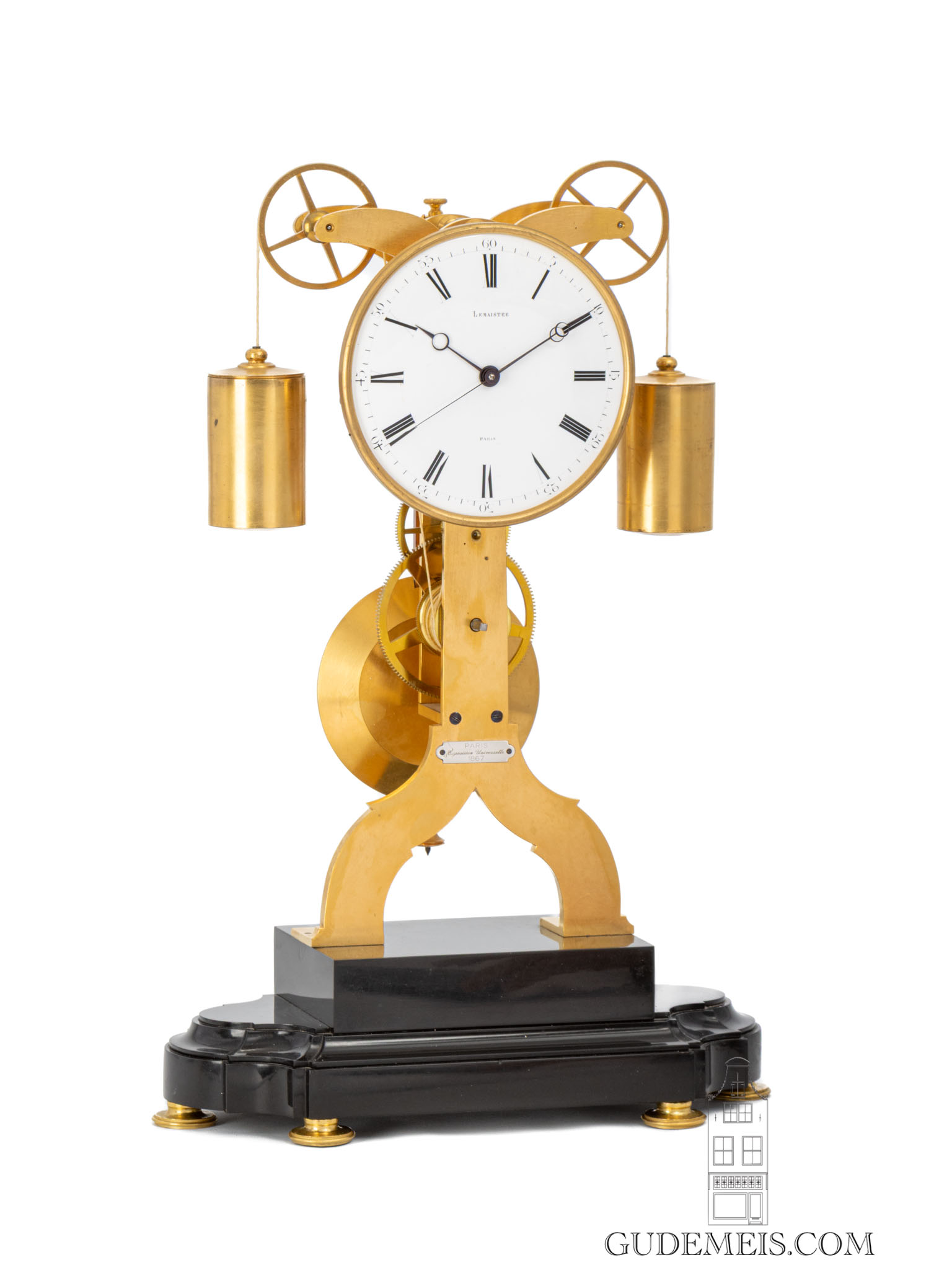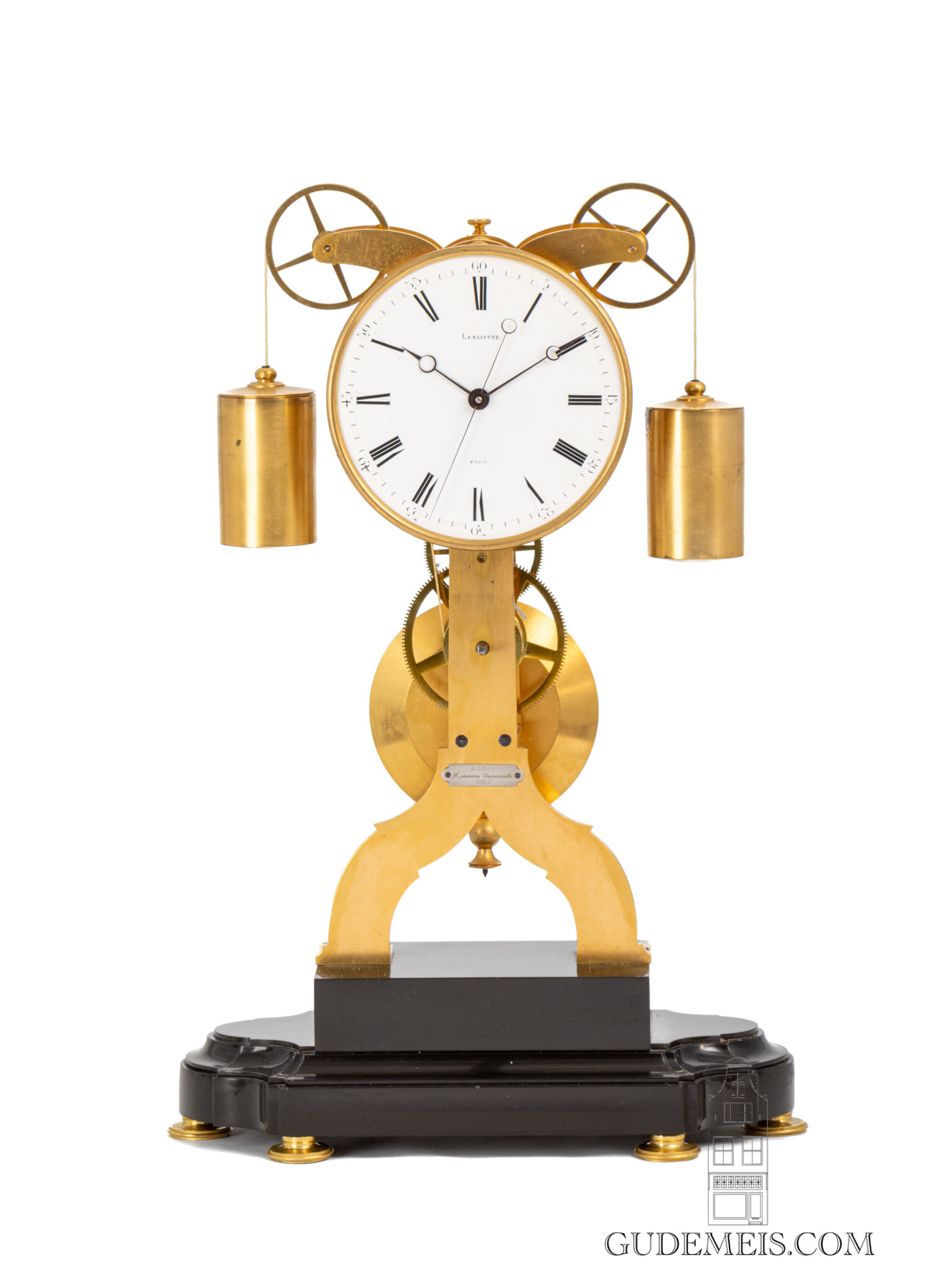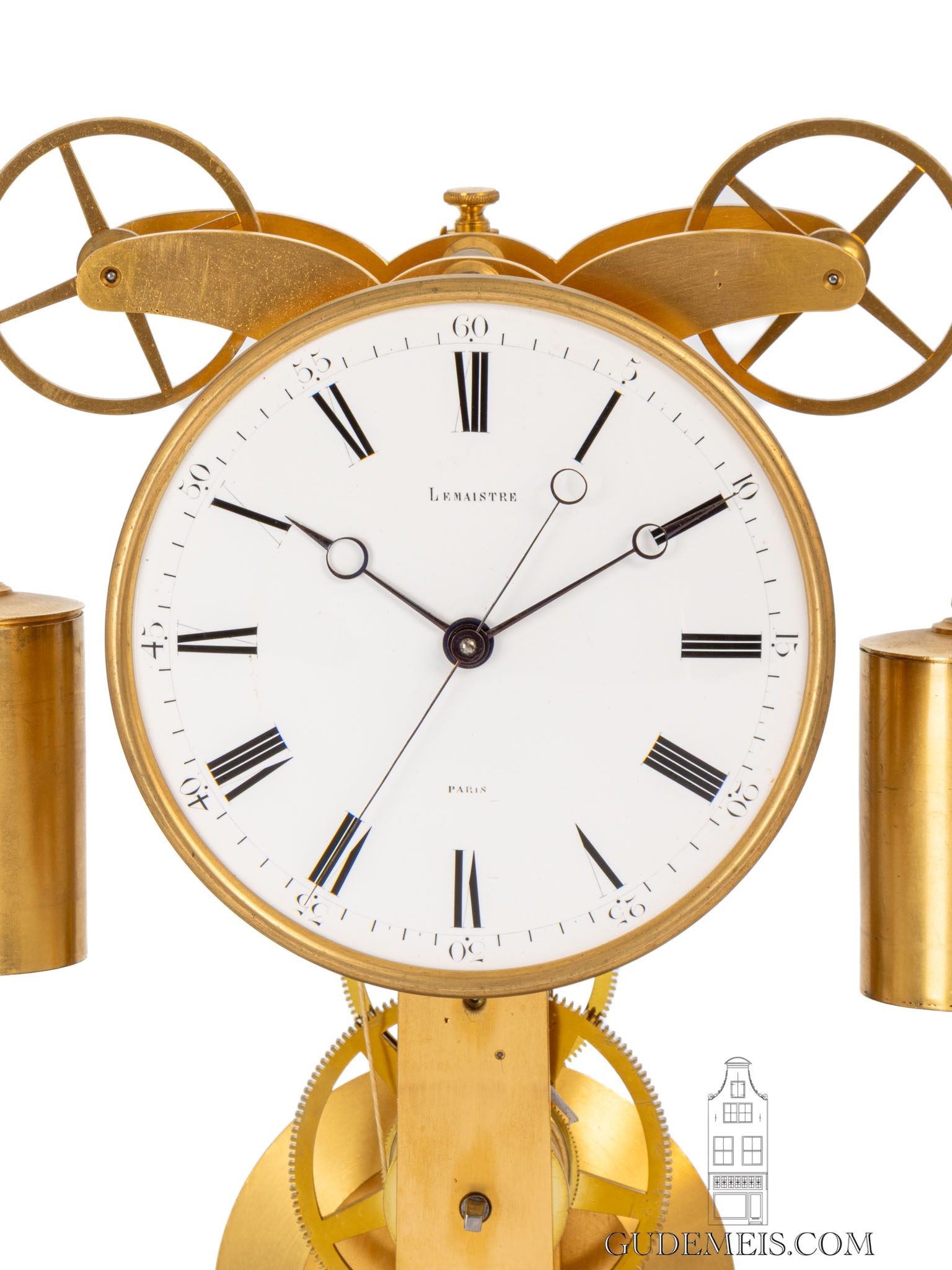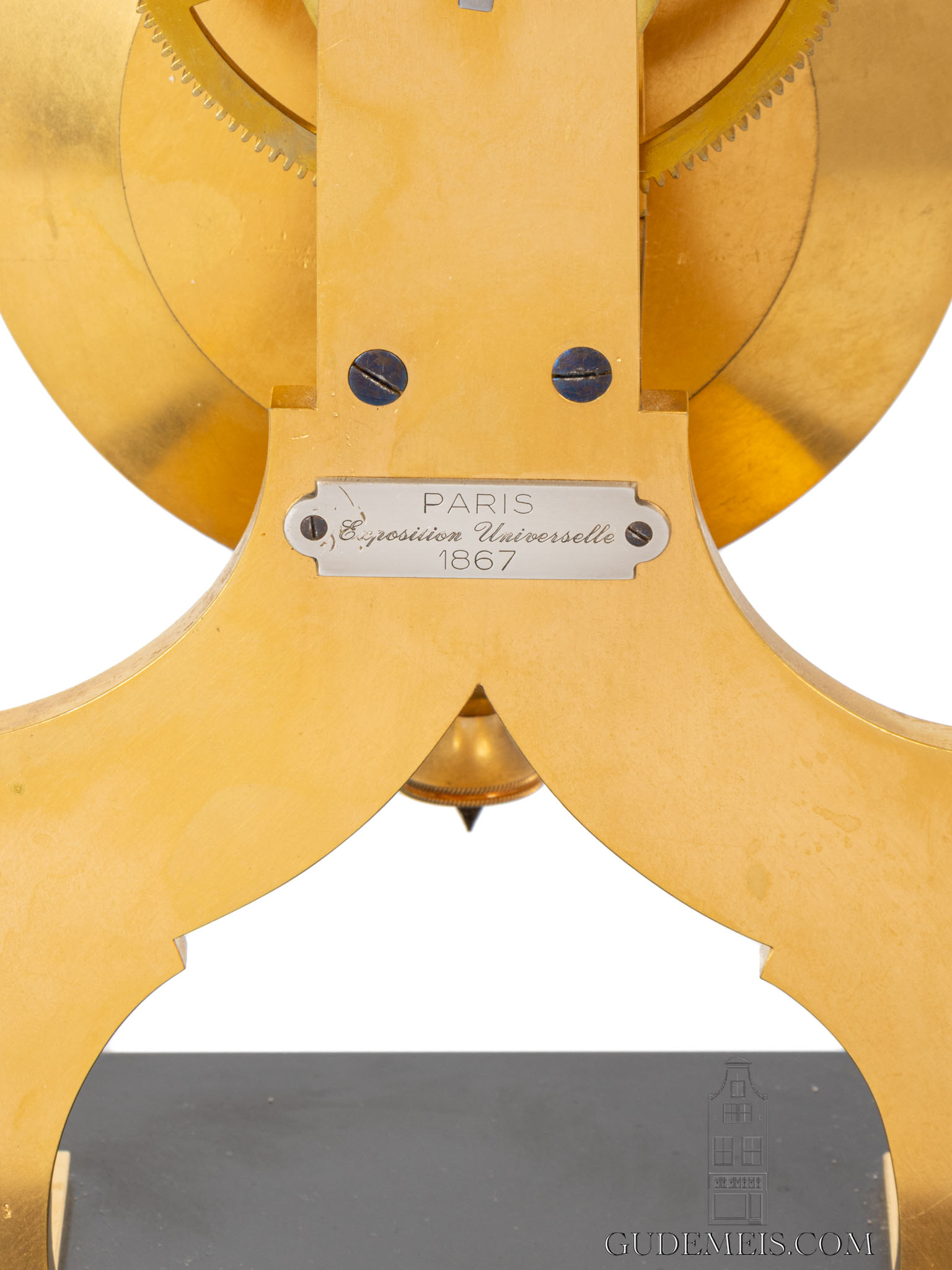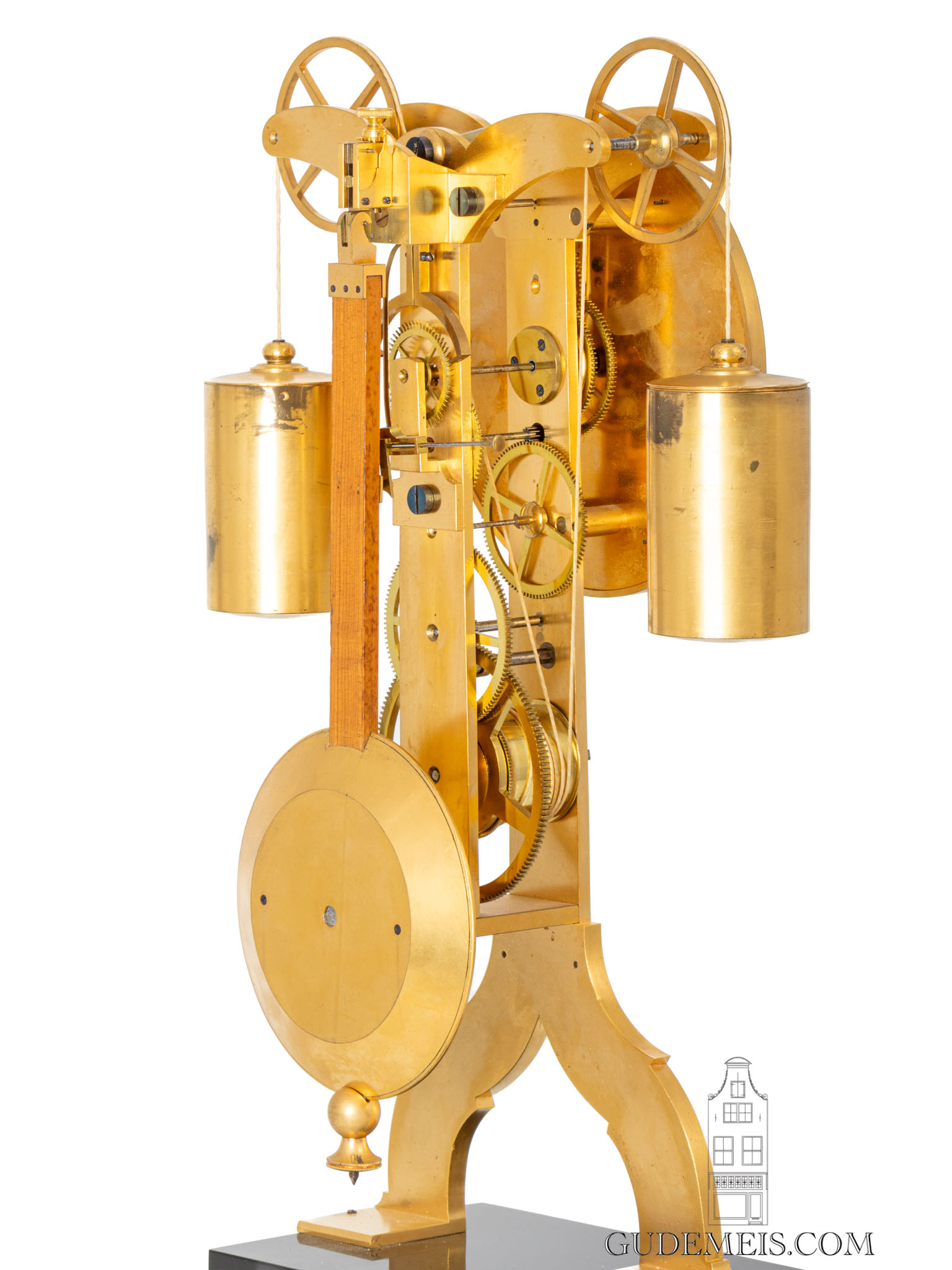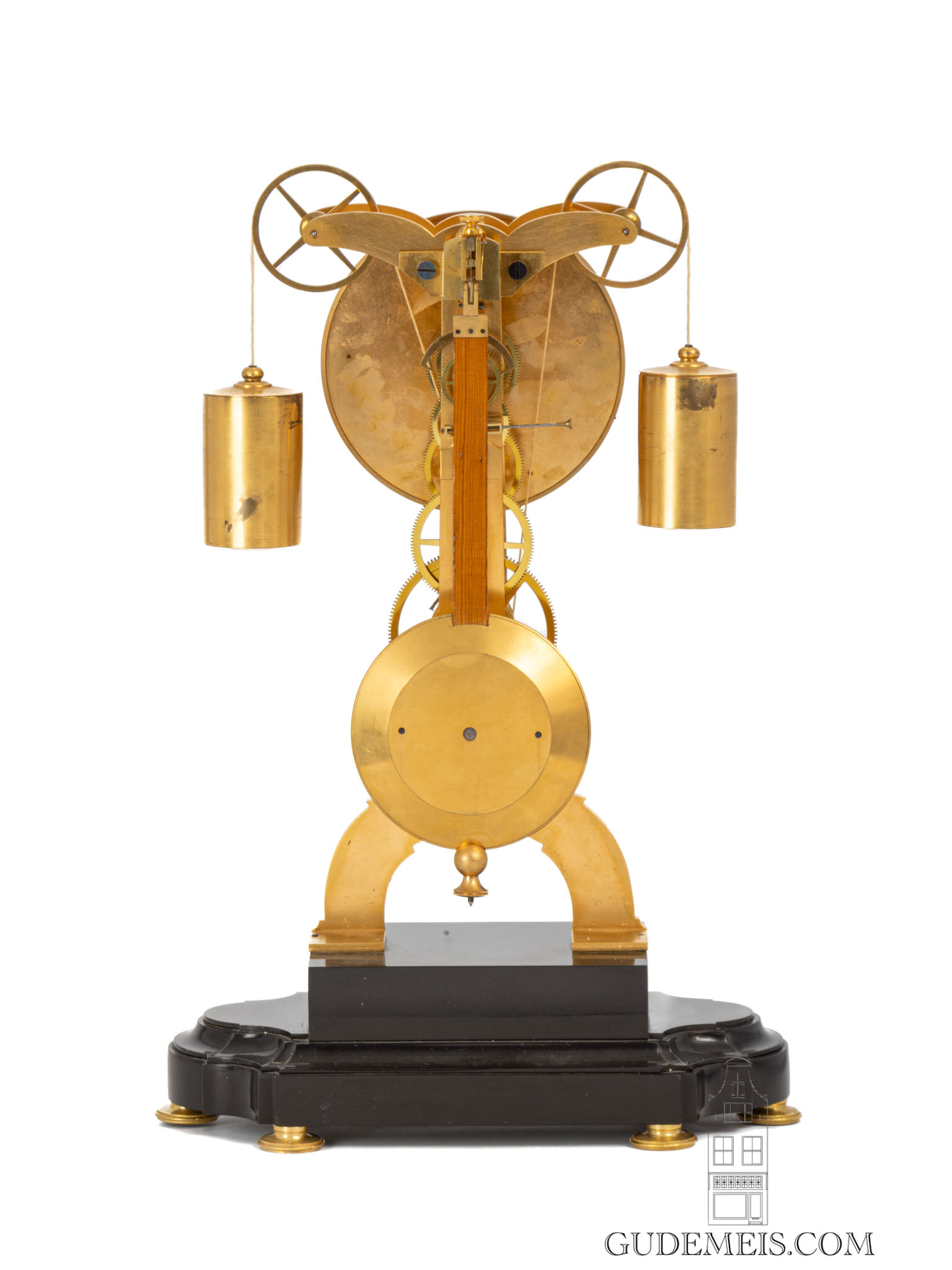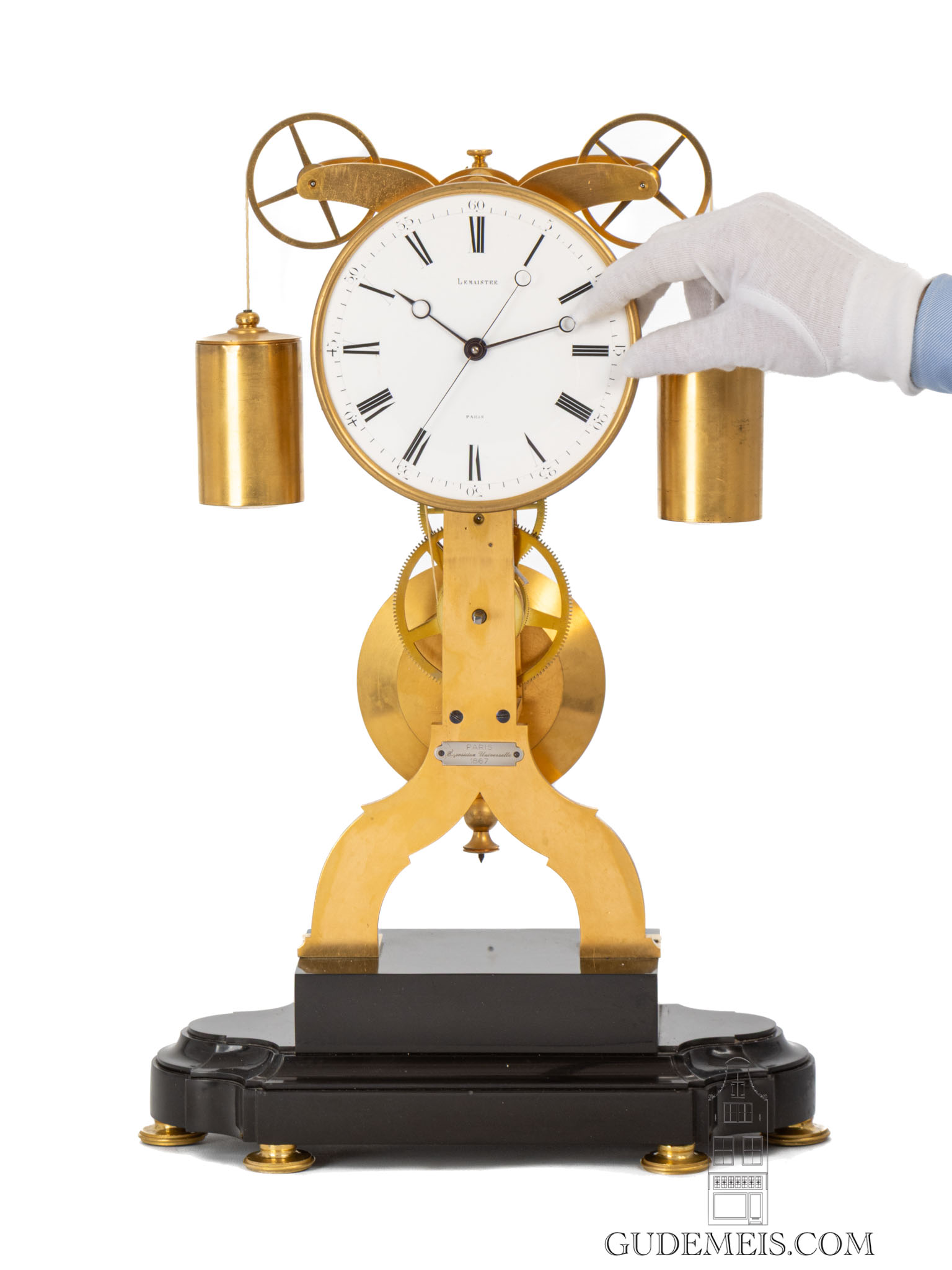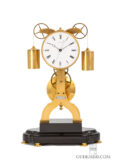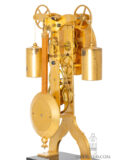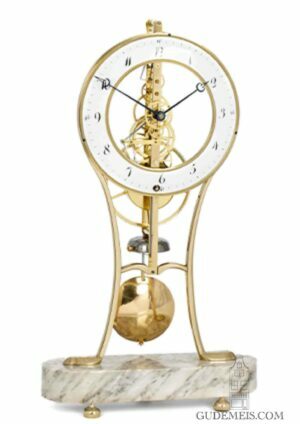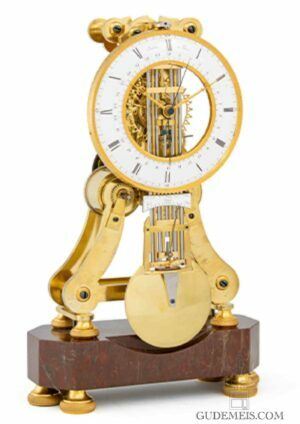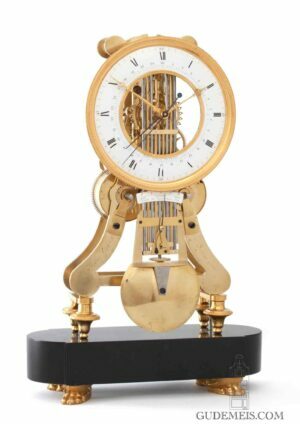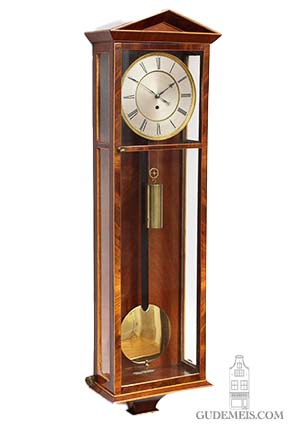A French brass skeleton regulator by Lemaistre made for the Paris exhibition of 1867
Description
Skeleton regulator
A clock without a case leaving the frame and movement visible, is called a skeleton clock. This type of clock originated in France in the last quarter of the 18th century. Most skeleton clocks were precision timekeepers intended for the elite in the France of Louis XVI. Among the nobility, it was important to have knowledge of art and culture, but the pursuit of science was also held in high regard. The visible movement was interesting to look at and a conversation piece with which the owner could demonstrate his erudition. The fact that the clocks were very accurate made it possible to use them in experiments and, for example, astronomy. While in England, from the second quarter of the 19th century onwards, there was a large production of mainly decorative skeleton clocks, in France the emphasis remained on precision. This clock is a continuation of a group of skeleton clocks that were made from the beginning of the 19th century. This clock has a number of features that ensure it’s accuracy. The weight-drive ensures a constant drive to the wheel train of the movement. The lacquered wooden pendulum rod is not sensitive to temperature differences which also contributes to good time keeping. The escapement is a variation on the Graham escapement, with the anchor engaging at the side of the ‘scape wheel. This means that only a very small oscillation of the pendulum is required, which also improves precision. But it is not only the technology that makes this clock so attractive. The clear, balanced design, together with the beautiful dial and sweep seconds hand, make it a very attractive piece.
Sweep seconds hand
The enamel dial has a gilt bezel and Roman numerals for the hours. At the outer rim are the minute markers, indicated by dots and numbered with Arabic numerals for every five minutes. Both the Breguet hands and the sweep seconds hand are made of blued steel. The centre is signed Lemaistre Paris.
Graham escapement
The movement has a duration of two weeks and is driven by two weights, both of which drive the going train. The clock is regulated by a variation of the Graham escapement in combination with a pendulum that has a wooden pendulum rod.
Y-frame
The inverted Y-frame is made of gilt brass. It is mounted on a rectangular black marble block that on an oval moulded base raised on six turned feet. On the front of the frame is a silver-plated plate engraved with ‘Paris Exhibition Universelle 1867’.
